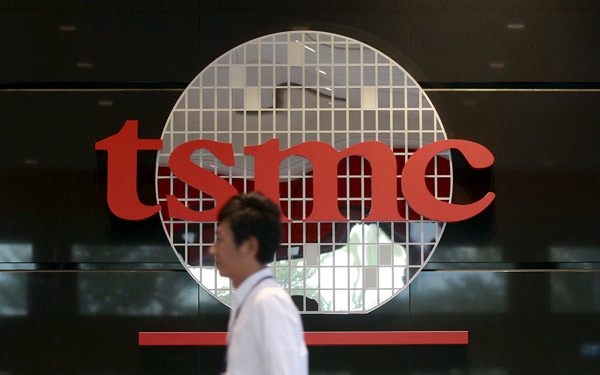 |
|
An employee walks in front of the logo of Taiwan Semiconductor Manufacturing Co Ltd at its headquarters in Hsinchu.[Photo/Agencies] |
Leading industry experts expect the chip-making industry to continue attracting more overseas investment, including from Taiwan, one of the mainland's biggest technology suppliers.
They said that with a continued lack of necessary techniques in the home market, reliance will continue on imported, high-end semiconductor technologies in 2016, even if gross domestic product growth slows further.
"The weak chip-production power is a bottleneck for the entire information technology industry, which the government sees as a major booster for the economy," said Ye Tianchun, director of the Institute of Microelectronics at the Chinese Academy of Sciences.
"We know, as does the government, that technology imports will help the country erase that bottleneck."
One of the companies seen at the center of this call for more technology is Taiwan Semiconductor Manufacturing Co Ltd.
The top global chipset maker is already planning a $3 billion plant in Nanjing, Jiangsu province, which is scheduled to begin mass production of mainstream processing technology in the second half of 2018.
Morris Chang, its chairman, said the move is a direct result of what he calls the "rapid growth of the Chinese semiconductor market", and reiterated its commitment to the mainland will continue.
"We decided to establish a wafer fabrication and design service center to provide closer support to customers, and to further expand our business opportunities."
Semiconductors are key components in making integrated circuits, better known as chipsets.
Some commentators have expressed concern, however, that TSMC's investment plan may be affected by recent political changes in Taiwan.
But Roger Shen, research director at Shanghai-based consultancy firm Gartner Inc, said despite the political uncertainties, huge mainland demand is set to attract more Taiwan-based tech firms.
"The mainland has been trying to lure top-end technologies to beef up its own development and manufacturing capability, and a series of favorable policies tailored for Taiwan companies are already in place," Shen said.
The mainland chipset market is expected to generate around $118 billion in turnover this year, an 8-12 percent increase compared with a year earlier, according to a think tank at the Ministry of Industry and Information Technology, the industry regulator.
Chip-making and other high-tech sectors remain core to the mainland's attempts to lift its slowing economy, underlined again this week by the latest GDP figures which showed growth of 6.9 percent last year, the lowest in more than two decades.
The government is also attempting to increase local production by allowing overseas supply-chain companies with high-end technologies to gain access to the multi-billion-dollar market.
Last week, the United States chipmaker Qualcomm Inc said it was building a joint venture in Southwest China's Guizhou province to produce server chips tailored for mainland customers.
Last year, Samsung Electronics Co Ltd's $7 billion semiconductor packaging and testing production line came on line in Xi'an, Shaanxi province.
